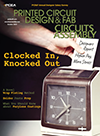Products
Featured technologies include scanners and gateways, power supplies and repeaters, I/O modules, Safety at Work components, intelligent photoelectric and inductive sensors, as well as rotary encoders, accessories and cables. Visitors can request a hard copy or download PDF information at: www.am.pepperl-fuchs.com/literature/litform.asp
Pepperl+Fuchs
CATSWeb Records Management allows easy, effective compliance with corporate record retention policies. Designed to address business requirements for electronic recordkeeping and compliance, while allowing a quick ROI, compliance enforcement and lower exposure to risk.
Automates the process of archiving or purging records and documents that meet configurable criteria. Facilitates compliance with regulatory requirements and standards related to records management; improves productivity and effectiveness of administrative staff; minimizes legal liabilities by ensuring that records are kept for only as long as they are useful and needed, consistent with corporate policies; and eases location and retrieval of archived records via integration with record-level audit trail and built-in query and search engines.
AssurX Inc., assurx.com
Standard connectors feature .002" (0.05 mm) wide conductors on .004 " (0.1 mm) centers for a conductor density of 250 per inch. Despite the fine geometry of the contacts, the material is said to be strong and durable enough to withstand repeated uses and will not break or fracture.
Z-Axis Connector Co., zaxisconnector.com


